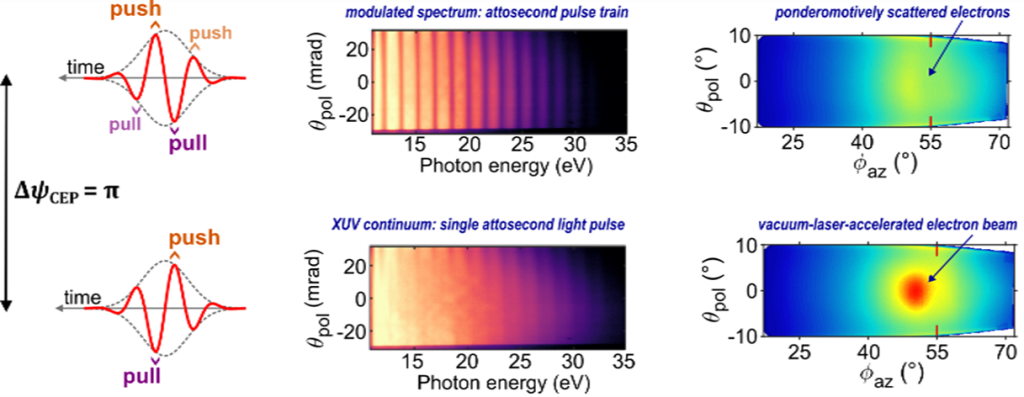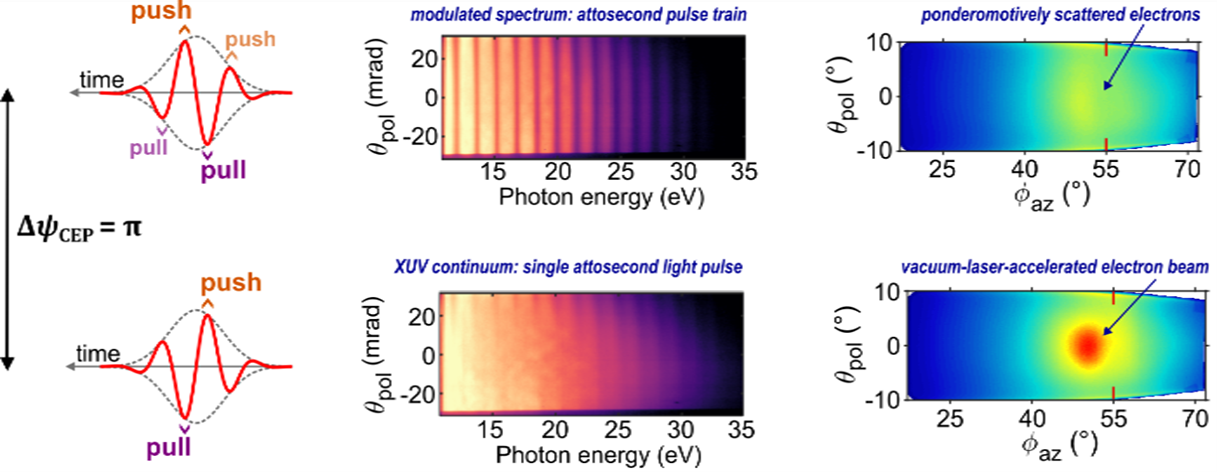Lightwave-control of relativistic plasma mirrors
The PCO-group has published results of experiments demonstrating control on the attosecond time-scale over the movement of relativistic electrons on a plasma mirror, driven by ultra-intense laser pulses barely longer than a single optical cycle.
These push and pull on the dense surface plasma, which can lead to temporal compression of the reflected laser waveform and to the injection of fast electron bunches into the reflected light field, which can further accelerate them in the process of vacuum-laser-acceleration.
Salle Noire 2 is currently the only lab in the world where the waveform of such ultra-intense driving pulses can be properly controlled, i.e. locked in, which let the researchers for the first time gradually tune the driven plasma dynamics between a single or two effective push-pull cycles.
Previously, random waveform variations could be tracked and correlated to simultaneously measured data. Now the important step from observation to control has been taken, bringing the realization of useful sources of powerful attosecond light pulses from plasma mirrors on step closer.
Also available on the French open access repository HAL.




